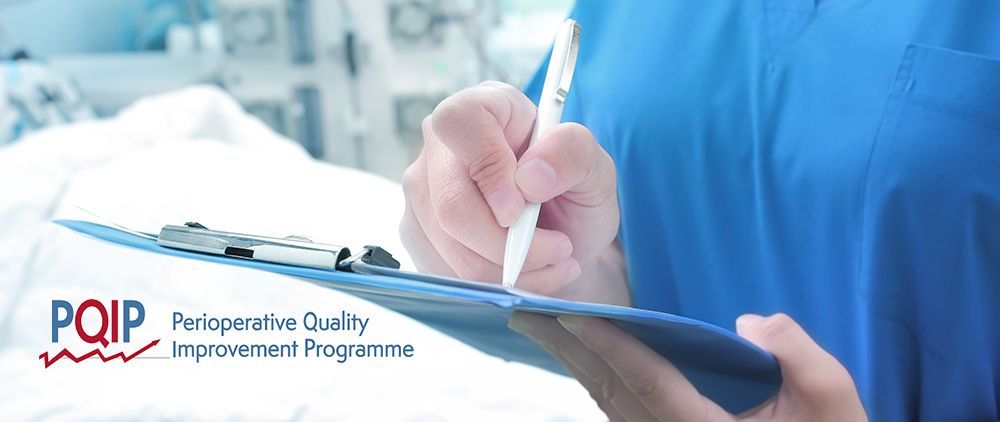The Preoperative Association Guidelines Overview
Below is an overview of The Preoperative Association’s Evidence-based Guidelines for Preoperative Assessment Units: A Practical Guide 2021 Edition.
We are confident you will find this volume an invaluable resource of practical information for pre-assessment staff of all grades.
Not a member? Sign up to access our online guidelines.
Common Comorbidities and their Investigation
-
Anaemia and iron deficiency in the perioperative setting
Authors: Caroline Evans, Richard Davies
Preoperative anaemia and resultant perioperative allogenic blood transfusion result in significantly poorer surgical outcomes.
This guideline covers early preoperative detection, assessment, optimisation and monitoring of anaemia and specifically iron deficiency as the commonest cause. This includes strategies to avoid preoperative transfusion where possible including utilisation of iron therapies.
This approach forms the 1st pillar of perioperative patient blood management to improve perioperative outcomes.
-
Management of preoperative hypertension
Authors: Sneh Shah, Sanooj Soni, Andrew Hartle
It is widely accepted that uncontrolled hypertension is one of the most important preventable risk factors for premature morbidity and mortality.
This guideline provides detailed advice on the pre-operative assessment and management of hypertension aimed at reducing the number of cancellations of elective surgery due to hypertension alone, improving the detection of significant hypertension prior to surgery and reducing the number of patients referred from preoperative assessment clinic back to primary care.
The pre-operative management of anti-hypertensive medication is also summarised.
-
Preoperative assessment of patients with obstructive sleep apnoea
Authors: Sarah Taylor, Gerard Danjoux
Obstructive Sleep Apnoea (OSA) is common and if untreated is associated with more than doubling the risk of perioperative complications and increased length of hospital stay.
This guideline comprehensively describes patient risk assessment for OSA including use of the STOPBANG screening tool, to facilitate diagnosis and treatment. It alerts the clinician to the predisposing factors, signs and symptoms associated with increased risk of OSA and explains the associated perioperative risks.
It is recommended that agreed, expedited referral pathways should be established between preoperative assessment clinics and local Sleep Medicine services to minimise delays where significant OSA is suspected.
Review of current evidence along with expert opinion provides guidance for management in the perioperative period according to severity of OSA. Day surgery should not be precluded for patients, however, detailed perioperative management & discharge planning should be put into place in advance.
-
A clinical approach to lung function testing in preoperative evaluation
Authors: Brendan Patrick Madden, Nordita Ramos-Bascon
Lung function tests are an essential aspect of pre-operative evaluation. All pre-assessment units should have easy access to simple spirometry as well as the ability to refer patients for formal lung function testing
This guideline suggests when to perform lung function testing and how to interpret spirometry results. It also discusses flow volume curves, diffusion capacity (gas transfer) measurement and the potential underlying causes of suboptimal test results. It stresses the importance of prompt referral to appropriate specialists for pre-operative diagnosis and optimisation if significant abnormalities are identified.
-
Perioperative management of cardiac pacemakers and implanted defibrillators
Authors: Robert Hill, Mark Tanner
Cardiac implantable electronic devices (CIEDs) are increasingly common in preassessment populations. Indications are wide-ranging and a structured approach is required to avoid patient harm in the perioperative period.
This guidance explains how to preoperatively assess the patient, the underlying cardiac condition and their device and the steps that must be taken prior to surgery. Perioperative safety strategies that should be employed in the elective and emergency setting are also presented.
-
Guidelines for the preoperative use of echocardiography
Authors: David Earl, Nicholas Lavies
Transthoracic echocardiography (TTE) is a non-invasive tool for the assessment of cardiac structural and functional abnormality.
This guideline discusses the indications for preoperative TTE in the context of common cardiac chronic health conditions, the relevant information available and how this can inform perioperative cardiac risk assessment.
-
Preoperative assessment and perioperative management of the patient at risk of acute kidney injury including patients with renal impairment
Authors: Kiran Rait, Lui G Forni
This guideline aims to support avoidance of postoperative acute kidney injury (PO-AKI) in the perioperative period. PO-AKI is associated with substantially increased patient morbidity, mortality and system costs, even when mild.
Risk scoring systems to preoperatively identify at risk patients are discussed alongside perioperative strategies to avoid PO-AKI development are presented.
Guidance is also provided on early postoperative detection and assessment of PO-AKI to aiming to limit severity when it occurs.
Preoperative Medication and other Compounds
-
Guidelines for the management of antiplatelet therapy in the perioperative period
Authors: Pallavi Dasannacharya, Lenny Ng, Wolfgang Bauer
Antiplatelet therapies are common in patient presenting for major non-cardiac surgery, frequently within 12 months of coronary stenting. Patients face the competing risks of perioperative myocardial events when antiplatelet therapies are interrupted and increased perioperative blood loss when they are continued. These must be balanced against surgical considerations.
This guideline reviews the commonly utilised antiplatelet agents and their indications for use. Approaches are presented to assess both cardiovascular thrombosis risk and risk of intraoperatively blood loss. A stepwise approach to decision making around management of antiplatelet agents including several specific clinical contexts is provided summarising the best available evidence.
-
Preoperative assessment and management of patients taking herbal remedies and cannabinoids
Authors: Adrian Wong, Serene Ho
The use of herbal/traditional/complementary remedies amongst patients is variable and probably underreported. These substances may interact with prescribed and administered conventional medication and may have serious side effects. Although regulation has been improved, there remain concerns over the efficacy, pharmacodynamics and pharmacokinetics of these agents
Patients should be asked specifically about their use of herbs, vitamins, supplements, or other natural or alternative products.
There is insufficient data on many of these herbal remedies to provide robust scientific recommendations however this guideline summarises the pragmatic advice for management of herbal remedies pre-operatively. It also provides an outline of the pharmacological effects and preoperative considerations for individual selected herbal remedies.
-
Management of disease modifying anti-rheumatic drugs in the perioperative period
Authors: Kimme Hyrich
Over the past 2 decades, new drug development for autoimmune inflammatory diseases including rheumatoid arthritis and related conditions, psoriasis and inflammatory bowel disease has been rapid.
Many of these drugs, in particular biologic and targeted synthetic DMARDs, are associated with an increased risk of infection although whether this extends to post-operative infections is less clear. Data to support evidence-based decision making regarding the peri-operative management of DMARDs are limited and largely of low quality.
Recommendations are given for management of conventional DMARDs and biologic and targeted synthetic DMARDs based on expert opinion and observational data.
Ideally an individualised risk assessment should take place based on the patient and the planned procedure and where possible, consultation with the DMARD prescriber.
-
Preoperative alcohol consumption – guidelines for assessment and management
Author: Lyn Owens
Hazardous drinking (>14 units per week) is common in UK surgical populations and associated with multisystem perioperative complications. Reduction in preoperative consumption can reduced perioperative morbidity and mortality and requires a multidisciplinary approach in the preoperative period.
This guidance presents screening strategies for hazardous drinking and the provision of brief preoperative advice to control intake. Approaches and tools for detection and support of serious alcohol use disorders requiring more intensive preoperative support are also presented.
Risk Assessment and Consent
-
Risk prediction tools in the preoperative setting
Authors: GF Singleton, Judith Tomlinson, Ramani Moonesinghe
Risk prediction tools should be used to guide multi-disciplinary decision-making, the allocation of appropriate resources and communication with patients and their families. These tools can be divided into risk prediction scores (providing a numerical scale of risk) and models (providing a percentage estimate of risk).
This guideline describes how to evaluate risk prediction tools and looks individually at a range of tools available to assist the clinician in pre-operative risk assessment.
It suggests that the SORT is easy to use requiring readily available preoperative data and has better calibration and discrimination than P-POSSUM and SRS.
The conclusion is that further research should focus on the development of tools to predict other patient-centred outcomes (such as longer-term survival and health related quality of life) and on measuring the impact that the use of risk prediction tools may have on surgical outcome.
-
Consent for anaesthesia and surgery: guidelines for preassessment units
Authors: Emma Plunkett, Surrah Leifer
Preassessment services have a key role in the process of perioperative informed consent and facilitating shared decision-making.
This guideline provides practical support for services to assist the gaining of valid consent for surgery and anaesthesia including assessment of capacity, frameworks for discussion of risk and provision of preoperative information. Specific situations discussed include the patient assessed to lack capacity, advance directives and refusal of consent.
Prehabilitation
-
Preoperative exercise: an evidenced based review and guidelines for perioperative teams
Authors: James Durrand, Gerard Danjoux
The association between poor exercise capacity morbidity and mortality has led to the introduction of objective functional capacity assessment within comprehensive preoperative assessment for major surgery. Preoperative improvement in physical fitness through increased physical acitivty and structured exercise training is a potential route to improved surgical outcomes.
This guideline provides an overview of current evidence for preoperative exercise, a patient centred framework for exercise prescription in the context of a multimodal prehabilitation approach and strategies to support preoperative behaviour change.
Interested in joining The Preoperative Association?
We have over 700 members, including Anaesthetists, Nurses and Pharmacists. Find out the benefits of becoming a member.
For our latest news sign up here
Latest news
The Preoperative Association is a registered charity. Registered Charity Number: 1200997
The Preoperative Association



